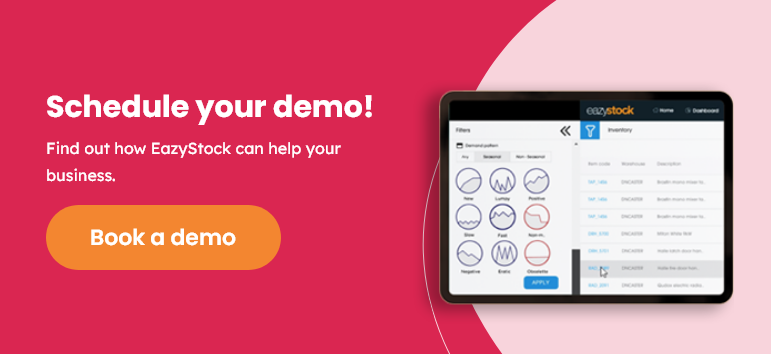The hidden costs of cutting software budgets
As we navigate a cost-of-living crisis that has seen prices and inflation soar, budgets are becoming tighter at home and work. To prevent drastic decreases in profitability or increases in debt, finance teams are scrutinising budgets and balance sheets to find areas to cut to make savings.
Changes in business priorities could also see companies shift their focus and budgets to new business initiatives. The first budgets up for slashing are usually marketing and software.
While it might seem that they are an easy way to save money, cutting software or budgets for new IT systems might not be the best financial decision for the business. While cutting budgets can provide short-term cost savings, it could also result in long-term inefficiencies or missed opportunities.
Companies should carefully evaluate the impact of software budget reductions on their operations and consider alternative strategies to optimise their software spending. This is particularly important when it comes to inventory management.
Effective inventory management
Effective inventory management needs a well-designed and well-implemented system to track, monitor, and analyse inventory levels, as well as to plan and forecast future inventory needs.
A good inventory management system can provide almost real-time information about inventory levels, including items in stock, available inventory levels, and which items need replenishing. More advanced systems can also help identify slow-moving inventory and provide data on sales trends and customer behaviour, informing future inventory decisions.
Without an effective inventory management system, businesses may struggle to keep track of inventory levels, leading to overstocking or stock-outs, both of which can be costly. Overstocking ties up capital in inventory that may sell slowly and lead to excess or obsolete stock, while stock-outs can lead to lost sales and dissatisfied customers.
Reducing spend on systems can mean teams are working with outdated or inadequate inventory management tools, which hinder a business’s ability to manage inventory effectively.
Inventory optimisation
Inventory management focuses on ordering, managing, storing and moving inventory, supervising the flow of goods from manufacturers to warehouses and onto the relevant sales channels.
Inventory optimisation balances high service levels with the lowest possible investment in stock items. This allows businesses to ensure they have the necessary stock to meet demand while reducing inventory costs and the risk of holding excess stock.

Inventory optimisation software can take inventory management to the next level, providing long-term benefits by forecasting demand, managing supply variables, and dynamically adjusting stock rules and inventory parameters. You can read more about inventory optimisation in our blog post.
While your ERP might be OK for managing individual stock items, they struggle when optimising across a range. Inventory optimisation software trumps the capability of an ERP thanks to aggregate-level statistical optimisation functionality. What is aggregate-level optimisation?
Aggregate-level optimisation analyses multiple products, locations and time periods to highlight trends and patterns to optimise inventory levels, reduce costs and improve efficiency. Essentially, optimising inventory at the aggregate level ensures you stock the right quantities to meet customer demand and improve customer satisfaction while minimising excess inventory and associated costs.
Cloud-based software
Software can be a significant expense, but there are ways to decrease software costs, including cloud-based solutions. Cloud-based software solutions offer several advantages over traditional software systems, including:
- Cost savings: Cloud-based solutions usually need less upfront investment as on-site hardware is not required. This also means they have lower ongoing maintenance and upgrade costs than traditional software systems, as you don’t need to replace the hardware.
- Scalability: You can easily scale cloud-based solutions depending on a company’s needs, such as adding or removing users, increasing or decreasing storage space, and adjusting computing resources as needed, without significant capital expenditure.
- Accessibility: You can access cloud-based solutions from anywhere with an internet connection, making it easier for company collaboration whether working remotely, in the office or warehouse.
- Security: Good cloud providers invest heavily in security measures, so they have robust security measures to protect against data breaches and cyberattacks. To check whether a provider is ‘good’, look for the best security certifications, such as ISO27001.
- Automatic upgrades: Cloud-based solutions typically offer automatic updates and upgrades, which can help ensure that the software is always up-to-date with the latest security patches and features.
Overall, cloud-based solutions offer greater flexibility, scalability, and cost savings compared to traditional software systems. They also allow companies to adapt to changing business needs and take advantage of new technologies as they become available.
EazyStock inventory optimisation software
EazyStock is cloud-based, ISO27001-certified inventory optimisation software that gives customers a cloud infrastructure used only to host EazyStock , so their data is safe and secure. This allows customers to access their system from anywhere and has options for audit logging for logins, admin activity, user, role, and permission events.
The enhanced stock classification functionality dynamically groups stock items using key properties, including value to the business, to ensure that companies focus on the most valuable items. EazyStock provides a more granular level of inventory control by automatically grouping items into matrixes and setting stock availability for each group.
With regular algorithm updates, EazyStock adjusts forecasts, safety stock levels and demand planning to ensure they remain accurate to keep stock at optimal levels.
Using EazyStock to optimise your stock will see cost savings thanks to stock level reductions, improved efficiency and automated reviews. We don’t have any hidden costs. Our annual fee includes all customer updates and training, so there’s no need to find any additional budget to cover any surprise costs.
You’ll also get a dedicated customer success manager who will work with you to understand your individual needs, get you up and running, and answer any questions you have.
If you need help with your stock management, get in touch to understand how EazyStock can help you find cost savings without cutting your budget.
Further information
For more information about how EazyStock can help you, please get in touch with our team.









